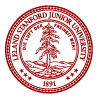256A Reading Response #8
“Definition 8.14: The ‘pi’ shaped individual” (pg. 428)
The ‘pi’ shaped individual (PSI) has deep disciplinary and domain expertise which is connected by as aesthetic lens. This is to say that a PSI has strong pragmatic/engineering/technical knowledge, coupled with an awareness of domain in which the PSI is operating (music, health care, etc.). But the twist seems to be the aesthetic lens or sensibility that connects the two. An almost philosophical, high-level understanding of the humane domain in which the PSI is operating. That the technical and domain knowledge came from a history, a tradition, a desire. It came from people. Understanding the strengths and trappings (including problematic areas) in a tradition or discipline from a larger perspective may not only lead to designs that address the humanity in the user, but may also be more effective through this acknowledgment of humanity. Less need-based and more desire-inspired.
The PSI framework may uniquely allow for this. While this pi-shaped approach arguably affords the potential for “better” designs and a deeper appreciation for the everyday, it may also grant an additional super-power: Code switching. By having a sufficiently “big-picture” perspective, and appropriate domain and technical knowledge, PSIs may be able to communicate to more folks more effectively by code switching, or using appropriate language and tone depending on the situation. The one draw-back to liberal arts and the PSI could be a lack of technical or domain depth (there are only so many hours in a day). Which is why ensuring PSIs are able to communicate effectively with collaborators is often crucial, as they could interface with engineers, artists, and users, almost seamlessly. And at the end of the day, the user, regardless of their ability to articulate it, is a co-designer in meaning making of the object and is always an expert of their own experience.
[This sounds great, but a person made of pie would also be pretty great!]

